The 2025 Social Media Salary Report
How much are social media managers earning?
Every year, Link in Bio sends out a survey to help create a benchmark of what compensation you can expect for each role in the social media industry. Today we are going to walk through the results for the 2025 Social Media Compensation Survey.
This newsletter is going to get into the big dollar sign amounts. You’ll see how you compare to your peers when looking at years of experience, industry, and job title.
Paid subscribers can join us in the Link in Bio Discord today to ask specific questions about the data.
Finally, thank you to everyone who took the time to fill out the survey! We surpassed the response from last year, with over 2,500 respondents providing salary data from over 390 cities and 40 countries. Alright. Let’s dive in.
UPDATE: You can view part two of the report here.
- Rachel Karten and Mitch Goldstein
Response demographics
As always, it is important to note that this is an imperfect dataset skewed towards existing subscribers to this newsletter.
We did see a slight uptick in the racial diversity of responses this year, in addition to data from new cities and countries. Still, the majority of responses came from white women, which matches existing data we have on the makeup of the industry at large. It’s clear that there’s still a lot more work to be done to build a more diverse and inclusive social media industry.
Two additional notes before we get into the dollar amounts:
For any non-USD salaries reported, we converted using the exchange rate from the date of data collection on 10/15/2025.
For any non-full numbers we assumed respondents meant “in thousands” where applicable—so if someone answered their take home annual salary with “$75”, we assumed they meant $75,000 a year.
Salary by years of experience
Compared to last year, we’re seeing a 3.3% increase in entry level (two years or less) salaries in the industry (from $61,660 to $63,718). For US-based folks, this is roughly equal to the rate of inflation since last year’s survey (~3.0% YoY). However, given the increase in actual costs of most common goods (groceries, gas, housing), the “buying power” of that salary is almost flat. Basically entry level employees are having to stretch their salary a bit further than this time last year.
We see the biggest increase in reported salaries for those who have been in the industry for 10 years or longer, with a considerable leap in earnings for respondents with 12+ years of experience. These professionals with 12 or more years in the industry are seeing the highest wage growth reported year-over-year, with a 12% increase from 2024.
Salary by title
In the chart above, we’ve calculated benchmark salary ranges based on all respondents globally, creating interquartile ranges for each reported salary, with the dot in the middle representing the median salary reported in the survey.
Anecdotally, we’ve seen job titles beginning to shift across the industry, with some folks specializing in certain aspects of social media (Social Video Editor, Social Media Art Director, etc) and others expanding out to become more generalists (which probably sounds familiar to any Senior Social Media Manager). As you progress in your career, it may be worth considering how you plot out what your next job title or two might be, and how that may impact your salary expectations. As social media continues to become more central to everyday marketing, we’d hope that the work, creativity, and labor lots of people with more generalist titles provide to their employers and clients is more fairly paid for.
Compared to last year’s responses, Social Media Managers are making 3.4% less. However, it is worth noting some differences in the ranges of responses we got. Last year, 31% of all respondents labeled themselves as Social Media Managers, compared to only 22% of all respondents this year. We also did not have an option for “Senior Social Media Manager” last year, whereas this year 12% of respondents said that was closest to their actual job title. It’s likely those with a “Senior Social Media Manager” last year, were selecting “Social Media Manager”. If you include both titles as one average using this year’s data, you’d see an average salary of $91,508 and a median salary of $85,000, which is $5,000 more than last year’s Social Media Manager median salary. This will now be standardized moving forward.
One of the bigger increases we see year-over-year is in salaries for Social Media Directors. The average last year was $129,184, increasing to $147,086 in this year’s survey results. That’s a 14% increase for those overseeing teams and helping steer companies’ overall social presence.
We also still see some high earners with generalist Social Media Manager titles. The top 1% of salaries reported for Social Media Managers are taking home $229,000 or more a year, and for Senior Social Media Managers, that number is even higher, earning $256,000 or more a year.
Salary by employment type
While a majority of respondents work in-house at a brand (70%), there is still little overall salary difference between freelancing, working full time for an ad agency, or going in-house. Though, as we’ve noted previously, the stability and workplace benefits (insurance, perks, etc.) that come from full-time employment are not typically reflected in this type of data.
We looked specifically at the top 25% of earners and found that 8% are freelance, 24% work at an ad agency, and 68% work in-house.
Salary by industry
Overall we saw the median salary by industry increase across most responses. The Technology sector now has the highest median salary, up $17,000 from last year. Financial dropped quite a bit from last year, where it was the number one highest median salary. Meanwhile, Food & Beverage, Healthcare & Pharma, Beauty, Politics, and Small Business all saw their respective median salaries increase by $10,000 or more compared to 2024’s survey results.
Within the top quartile of reported salaries, 23% of respondents work at tech companies and 20% work at ad agencies. So if you’re exploring a move to a higher paying industry, those might be the best places to start looking.
B2B vs B2C
Given the amount of “how this relates to B2B marketing” posts on LinkedIn, you would be forgiven for thinking that we’re all out here on the B2B grind. The results from our survey say otherwise, only 20% of responses said they primarily focus on B2B content. We found that social media professionals who work in B2B tend to earn about 10% more than those who work in B2C.
Salary by company size
Working at a very large company (1,000+ employees) pays higher than small- or medium-sized businesses. Notably, self-employed people in the industry are making about as much as those who reported working at companies with 50 to 250 employees.
Comparing men’s and women’s salaries
Women still make up a majority of the industry and our respondents, however men on average are still making almost 25% more across industries and titles. Although a small sample size, nonbinary, trans, and genderqueer respondents reported even lower average salaries than women.
Matching the trend we saw last year, even though men make up less of the industry, by the results of our survey they are almost twice as likely to hold director level and above positions (12% of men compared to 6% of women).
Closing thoughts
This was the first year that we had year-over-year data to understand salary trends in the social media industry. The biggest takeaway was that while entry level salaries saw a minimal increase YoY (3%), we saw fairly high wage growth for those who have worked in the industry for 10 years or longer, with a considerable leap (12%) in earnings for respondents with 12+ years of experience. To us, this suggests that senior social media professionals are getting more recognition for their leadership contributions to overall marketing departments. (After all, it is the same year we saw Duolingo hiring for a Director of Social Media role with the high end of the salary band being $342,000.) There’s still more work to do to get that entry level salary up though. Next week we’ll be digging into how negotiations impact earnings, which will be helpful for anyone applying to roles earlier on in their careers.
When Link in Bio has shared salary data in the past, we’ve heard from lots of people that it empowered them to ask for a raise or negotiate a better starting salary. This survey and the charts above can also be a good starting point to begin conversations with your team and colleagues around salary transparency, which is one of the first steps you can take towards ensuring a more equitable workplace. Even though salary transparency conversations can be awkward and uncomfortable at first, we are strong advocates for them!
In general, a lot of the YoY trends were up and to the right, which is a good sign for our industry. Next week we are going to get into how we’re all feeling (spoiler alert: the words “burnt out”, “exhausted”, and “AI” came up a lot). We’ll see you then.
View part two
77% of social media managers are burnt out
Last week, we covered the money side of our salary report. We dug into the big dollar sign amounts to really understand how you compare to your peers when looking at years of experience, industry, and job title. You can find it here.
Finally, you can support free resources like this one with a paid Link in Bio subscription. You’ll get weekly strategy newsletters and quarterly trend reports, along with access to the very active Discord community.
One member shared, “The Link in Bio Discord has been an absolutely invaluable part of my growth as a social media professional. It’s allowed me to meet so many fascinating and talented folks in an industry that can often feel like living on an island, and helped me contextualize a lot of the mysteries of social.”
Link in Bio is also likely an educational expense at your company. Here’s a template for you to use when asking your manager.



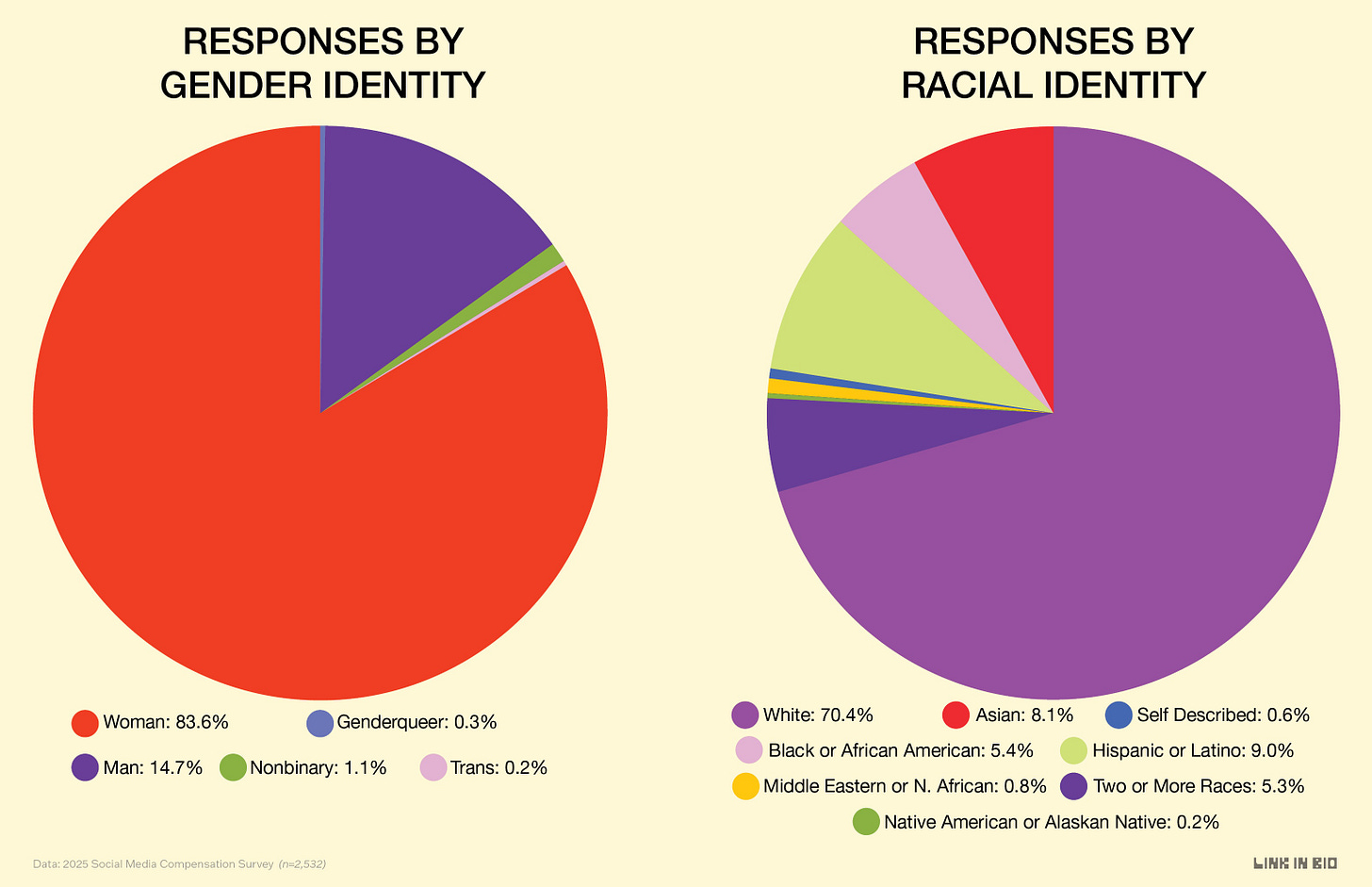
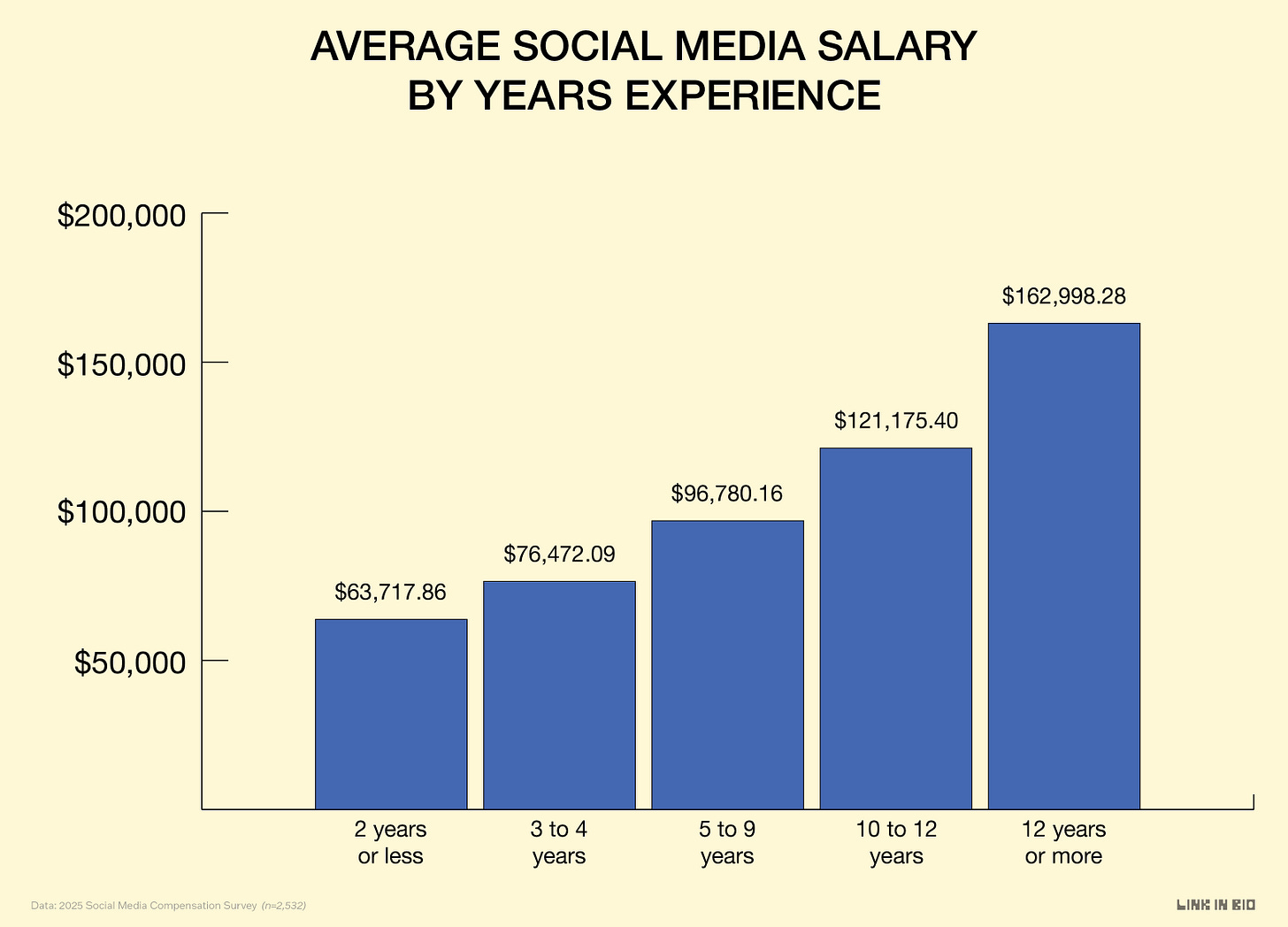
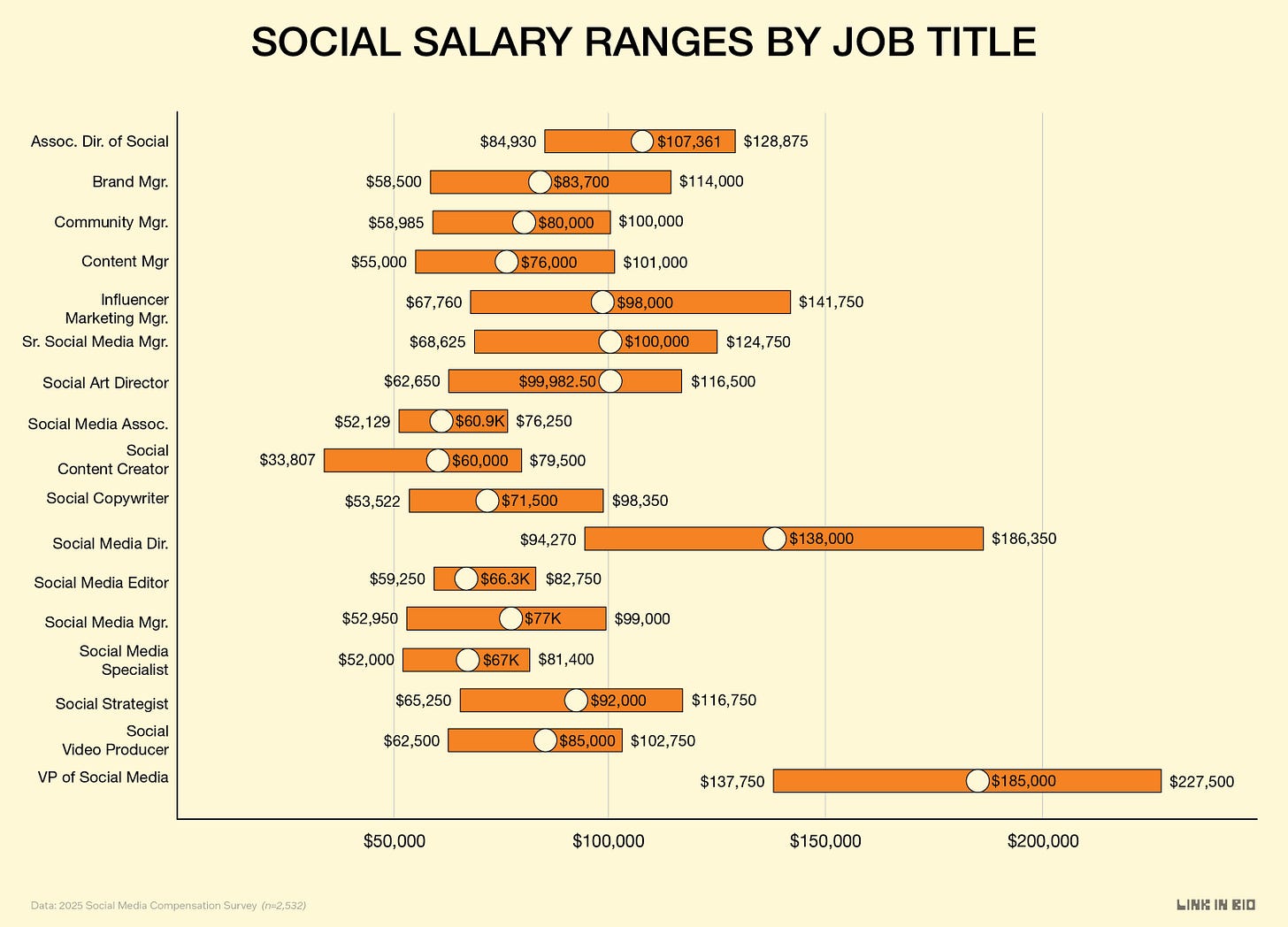
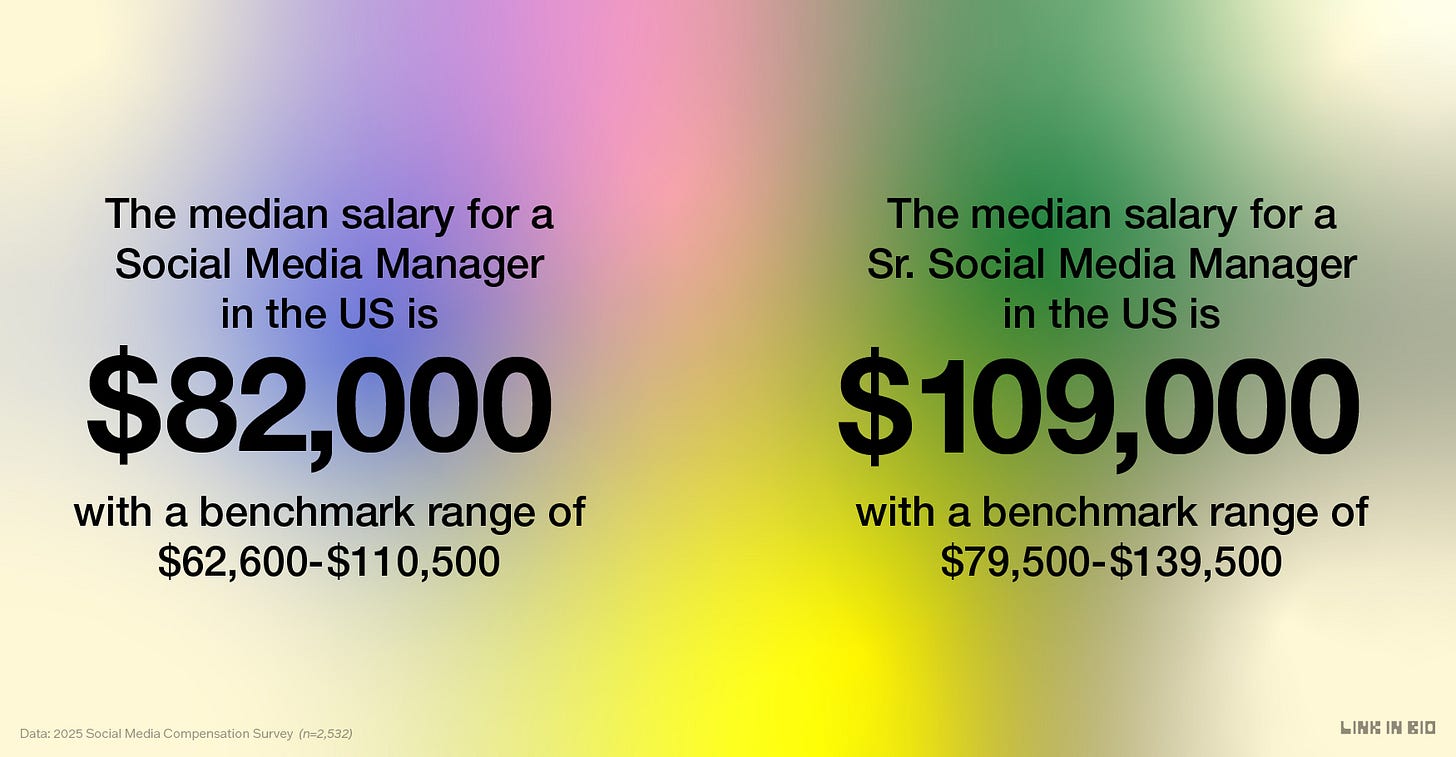
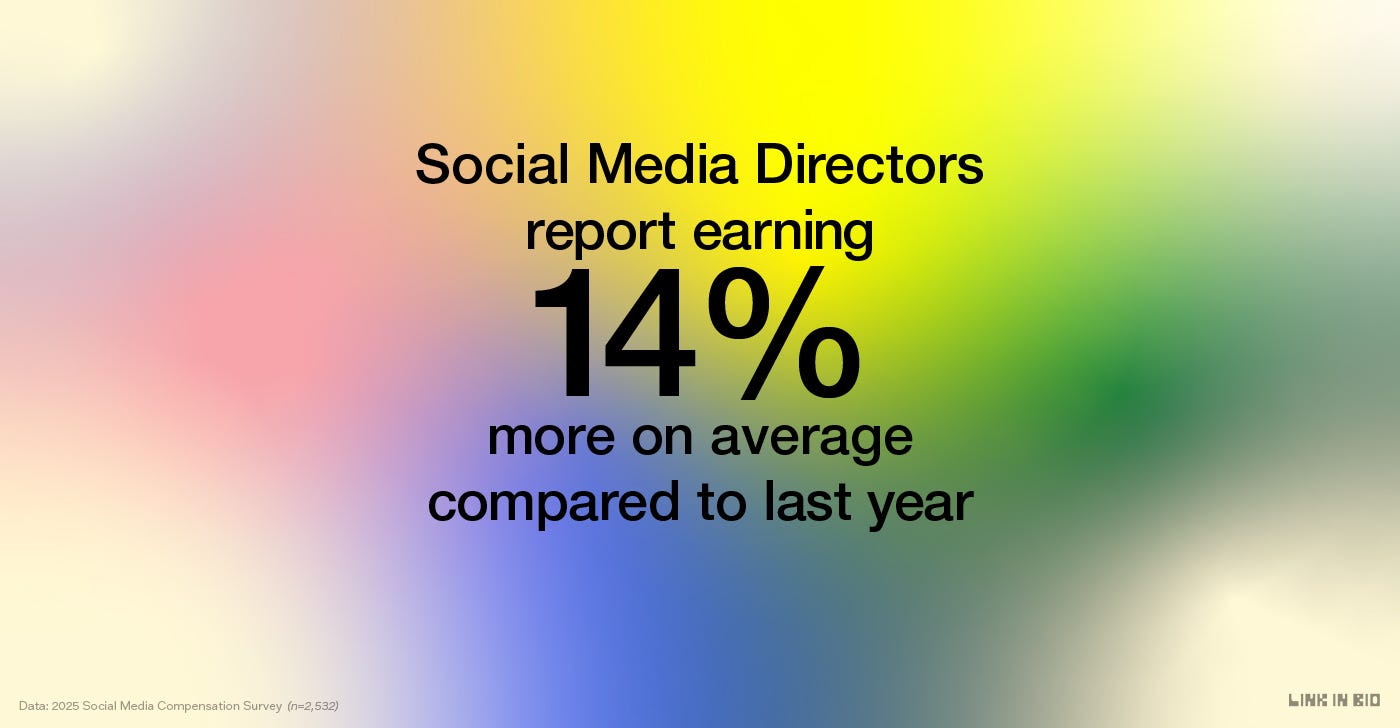
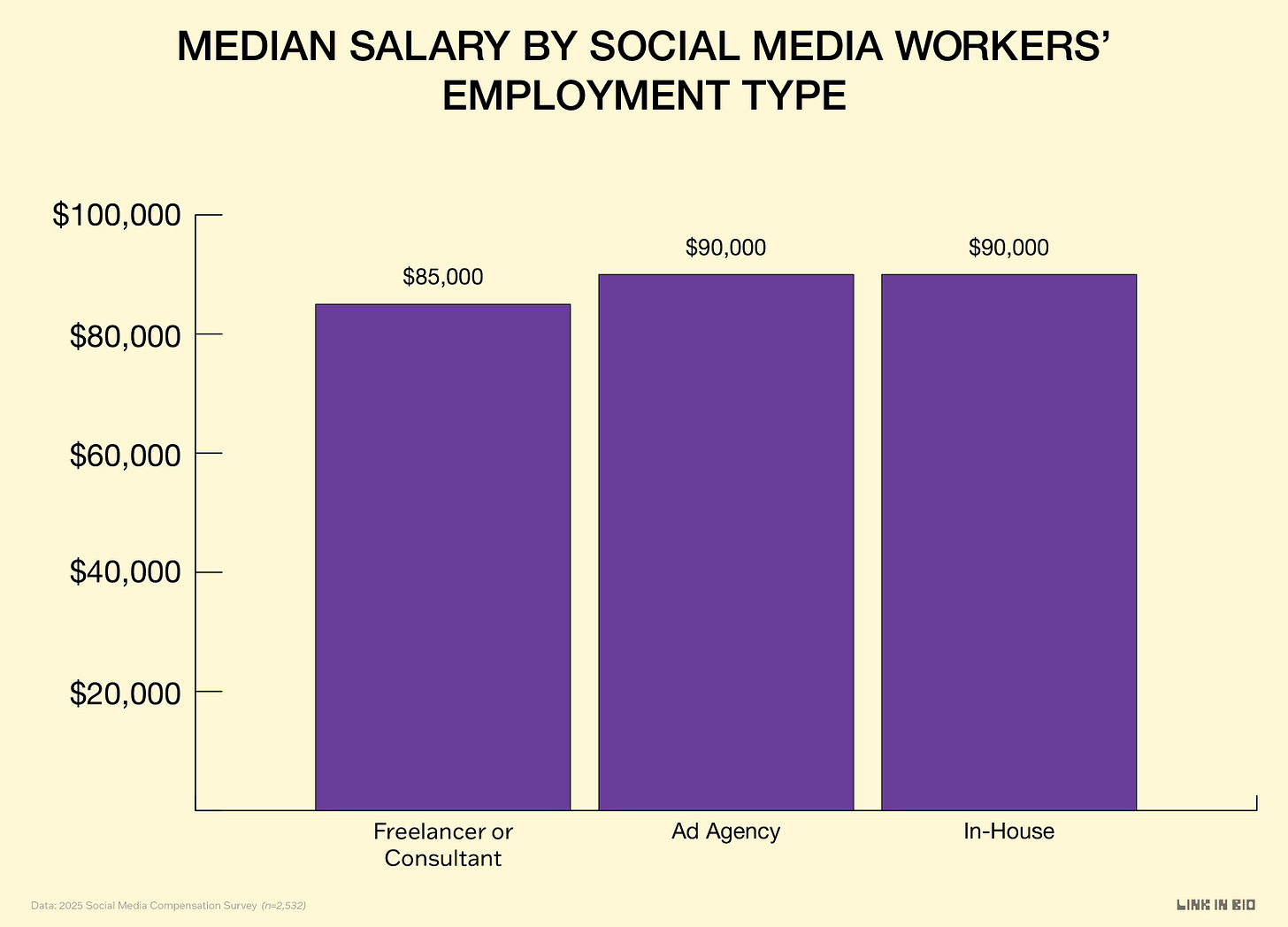
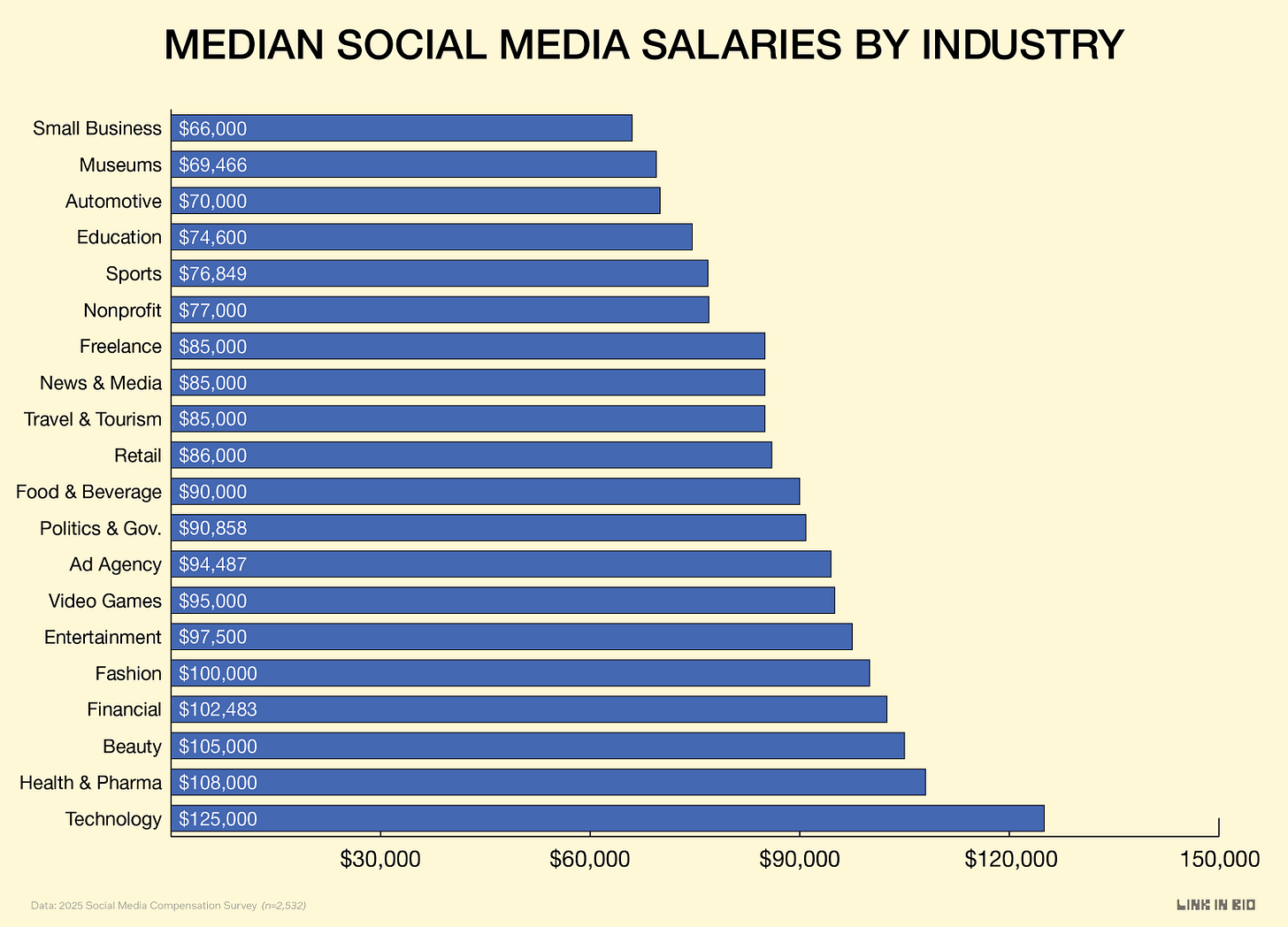
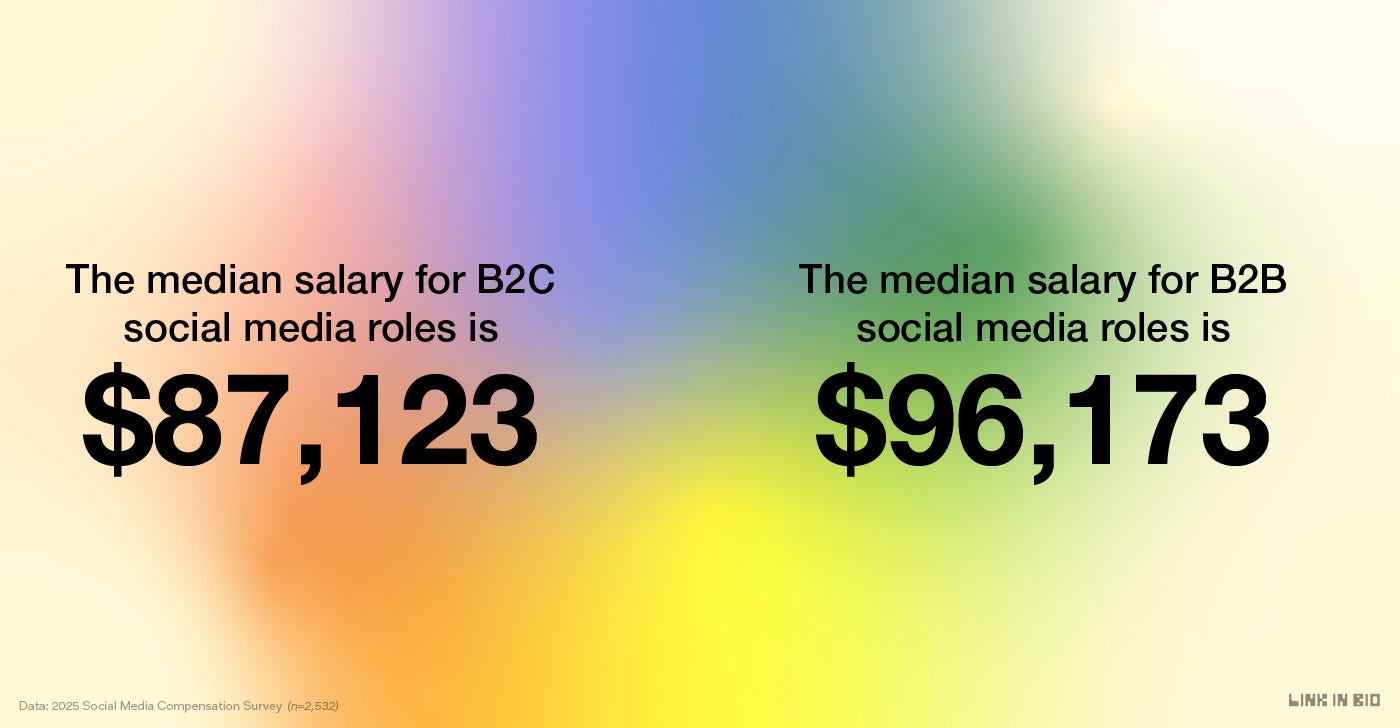
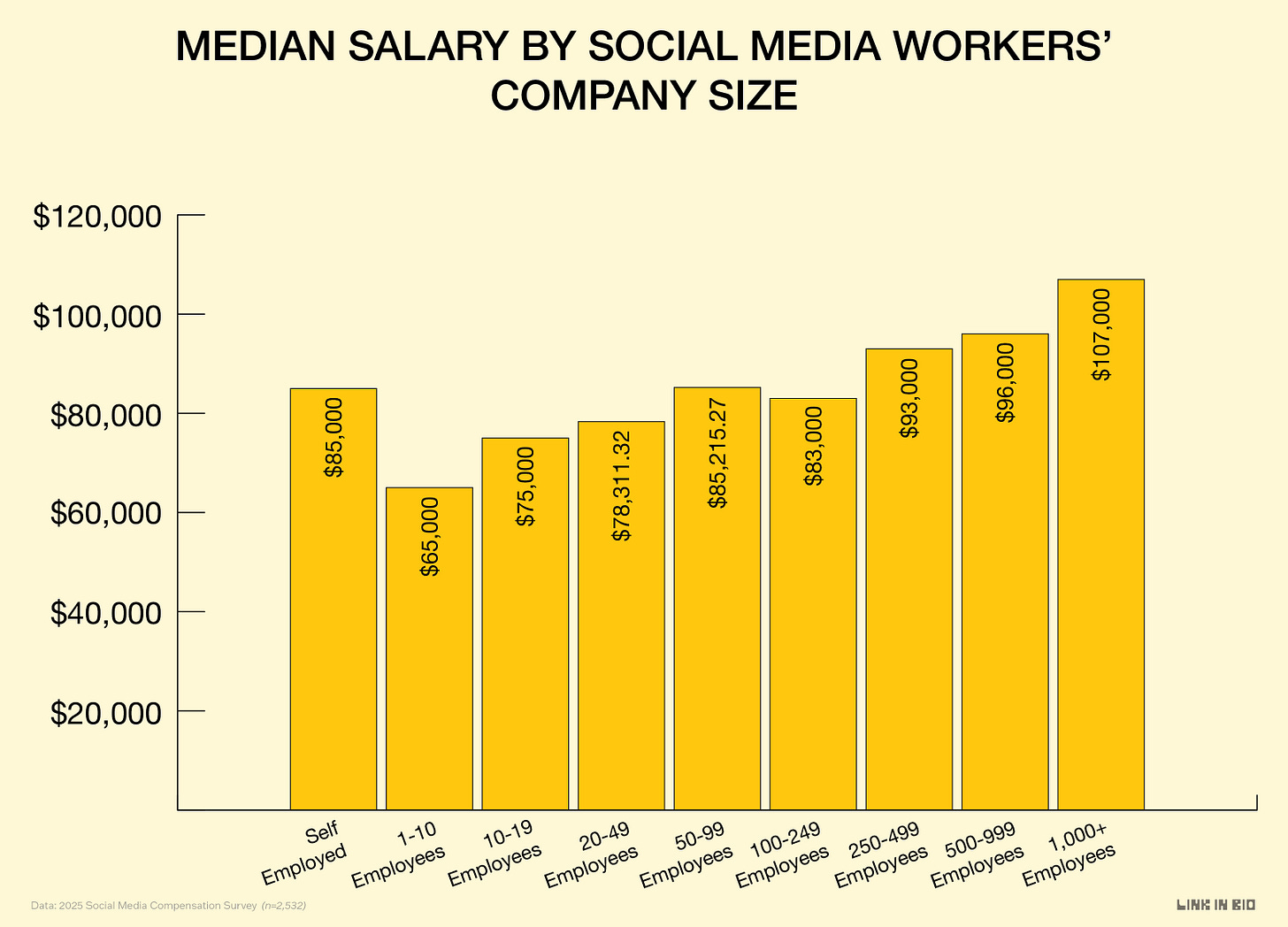
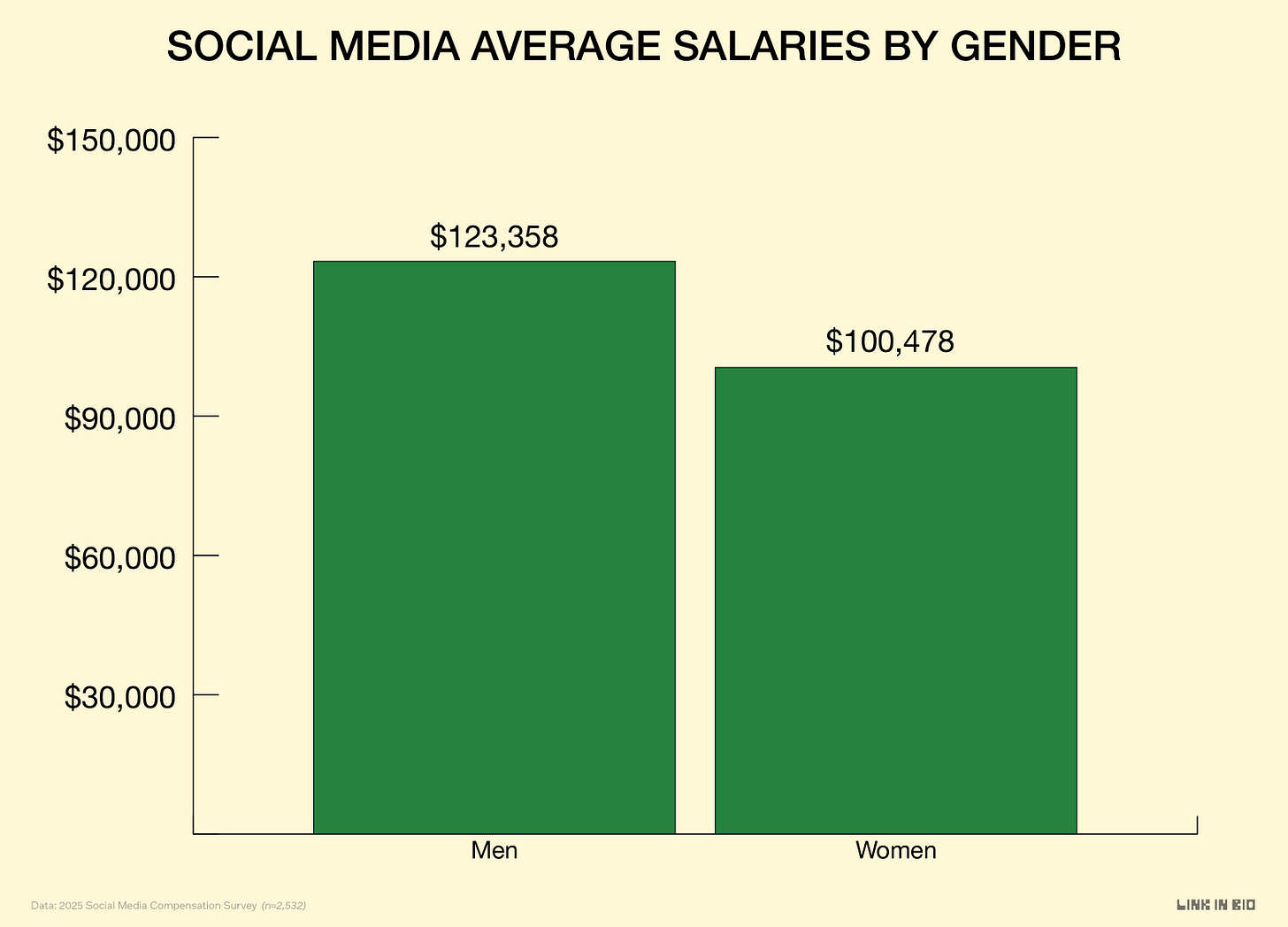

This feels so low compared to France ahaha